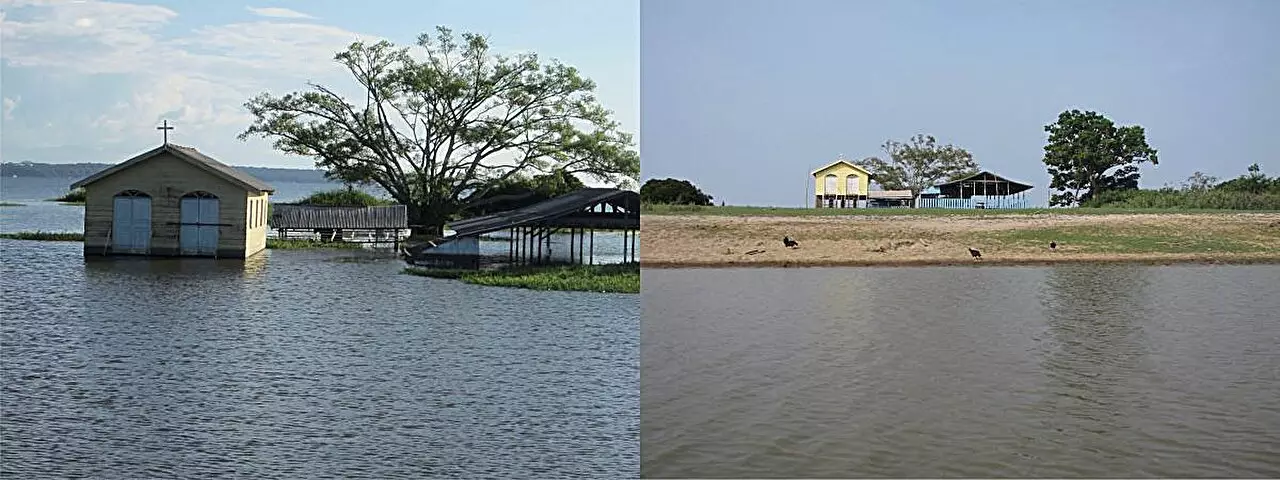Climate change poses a multitude of threats to ecosystems across the globe, and few are as critical as those that affect the Amazon Rainforest. As one of the most biodiverse and vital ecosystems on Earth, the Amazon serves as a significant regulator of atmospheric gases, particularly methane. Recent research by a team from the University of São Paulo (USP) sheds light on how anticipated climatic shifts—namely extreme temperatures and unpredictable humidity—could reshape the dynamics of methane production and absorption in this crucial biome. Exploring these findings invites a comprehensive understanding of the critical interplay between environmental conditions and microbial activity in the Amazon.
The Amazon Rainforest is characterized by a variety of landscapes, including expansive floodplains that experience prolonged water coverage due to consistent rainfall and rising river levels. This unique habitat contributes significantly to global greenhouse gas emissions, reportedly accounting for up to 29% of methane emissions derived from wetlands. Conversely, the upland forests provide a vital counterbalance, acting as methane sinks that capture this notoriously potent greenhouse gas from the atmosphere.
In light of these dual roles, the implications of changing climatic conditions become especially concerning. Researchers, led by Júlia Brandão Gontijo, discovered that the microbial communities producing and consuming methane are susceptible to environmental fluctuations like increased heat and moisture variations. This could be especially troubling for the upland forests, where shifts in microbial behavior may lead to a substantial decrease in their capacity to absorb methane—potentially by as much as 70% during dry spells and a significant uptick in emissions during periods of intense rainfall.
The study carried out by Gontijo and her colleagues involved an intricate 30-day experiment that utilized soil samples from both floodplain and upland forest locations in Brazil. Researchers subjected these samples to climate simulations, exposing them to extreme temperature increases (27 °C to 30 °C) and varying humidity levels. Analyzing these samples through genetic sequencing and real-time quantitative PCR techniques allowed the team to identify and quantify methane-producing microorganisms.
Alarmingly, results indicated that while methane emissions from floodplains appeared stable, the population of methane-producing microbes was on the rise. This suggests a future scenario in which these microorganisms may proliferate in response to shifting environmental factors. In contrast, the upland forest microbiome showcased a more precarious balance—with its ability to consume methane significantly jeopardized under warmer, dryer conditions.
The ramifications of these discoveries extend beyond the Amazon, signaling potential global impacts on methane emissions. Given the Amazon’s prominence in the Earth’s climate system, any alterations in its methane cycling could exacerbate the already high levels of methane—an atmospheric compound with a global warming potential far exceeding that of carbon dioxide. The fact that atmospheric methane levels have surged by approximately 18% over the last forty years amplifies the urgency for effective conservation and management strategies in the region.
As highlighted by Gontijo, while floodplains exhibit adaptability to climate change, the upland forests have demonstrated heightened sensitivity. This could not only lead to a shift in methane fluxes in the Amazon but may also disrupt the balance of greenhouse gas exchanges globally. Thus, the need for immediate actions is underscored by these findings, emphasizing the importance of policies that aim to conserve and restore both floodplain and upland ecosystems.
Understanding the complexities of methane cycling in the Amazon introduces additional layers of research potential. The presence of methanotrophic microorganisms—those capable of using methane as an energy source—offers a glimpse of hope, suggesting avenues for mitigating increased emissions. Future field and laboratory experiments could provide deeper insights into these microbial dynamics and evaluate their contributions to overall methane regulation in the context of climate change.
Conclusively, the findings from USP’s study are critical not only for the academic community but also for policymakers dedicated to environmental sustainability. As the battle against climate change intensifies, collaboration and innovative research efforts will be essential to safeguard the delicate ecosystems and the myriad of benefits they provide to our planet. Addressing these pressing concerns can help to manage and potentially reverse the trajectory of climate change, benefiting both the Amazon and, ultimately, global ecological health.

